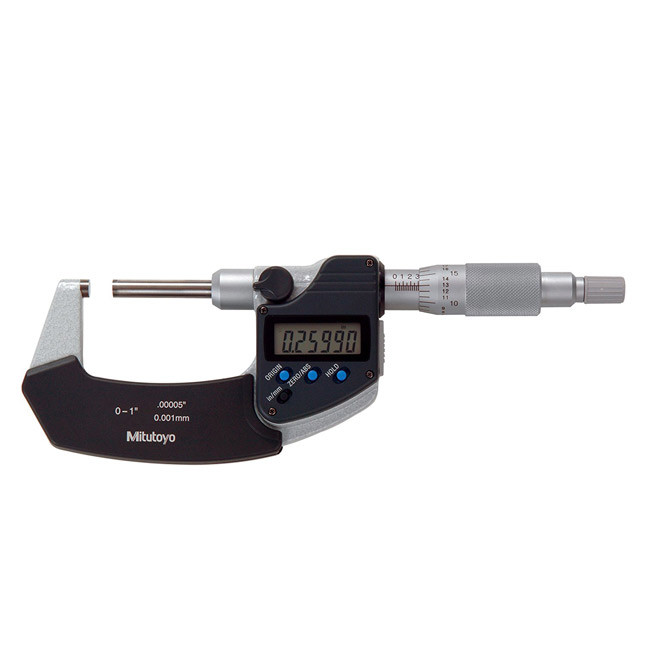The micrometer’s electronic microprocessor can hold measurements at any position, convert to absolute value, set a temporary zero position, and return to a true zero reading. An output jack transmits Statistical Process Control (SPC) data results to a computer or external device through an interface cable (sold separately). The spindle and anvil have flat measuring faces and are carbide-tipped for wear resistance. A spindle lock helps provide secure locking of the measurement position. The micrometer includes, and is powered by, a single SR44 silver oxide battery, and comes with a plastic case for storage.
Micrometers are precision measuring instruments that use a calibrated screw to measure small distances. These measurements are translated into large rotations of the screw that are then able to be read from a scale or a dial. Micrometers are typically used in manufacturing, machining, and mechanical engineering. There are three types of micrometer: outside, inside, and depth. Outside micrometers may also be called micrometer calipers, and are used to measure the length, width, or outside diameter of an object. Inside micrometers are typically used to measure interior diameter, as in a hole. Depth micrometers measure the height, or depth, of any shape that has a step, groove, or slot.
- Digital, single-value readout LCD displays in metric units for readability
- Statistical Process Control (SPC) output transmits results to a computer or external device through an interface cable (sold separately)
- Non-rotating spindle helps provide steady positioning during measurement
- Ratchet-stop mechanism helps provide uniform pressure for precise, repeatable measurements
- Carbide facing on spindle and anvil provides wear resistance
- Origin-set, Zero-setting, Data hold, Data output, inch/mm
- conversion (inch/mm models)
- Alarm: Low voltage.
- Counting value composition error.
